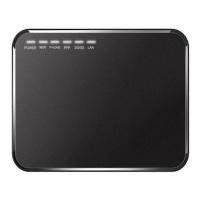2 Confidential and Proprietary Information of ZTE CORPORATION
National Restrictions
2400.0-2483.5 MHz
This equipment may be operated in:
General authorization required for outdoor
use and public service
Outdoor use limited to 10
mW e.i.r.p. within the band
2454-2483.5 MHz
Military Radiolocation use. Refarming of
the 2.4 GHz band has been ongoing in
recent years to allow current relaxed
regulation. Full implementation planned
2012
If used outside of own premises, general
authorization is required
General authorization required for network
and service supply (not for spectrum)
This subsection does not apply for the
geographical area within a radius of 20 km
from the centre of Ny-Alesund
Only for indoor applications
Note: Please don’t use the product outdoors in France.
FCC Compliance
This device complies with part 15 of the FCC Rules. Operation is subject to the following two conditions:
(1) This device may not cause harmful interference, and (2) this device must accept any interference
received, including interference that may cause undesired operation.
Caution: Changes or modifications not expressly approved by the manufacturer could void the user’s
authority to operate the equipment.
NOTE: This equipment has been tested and found to comply with the limits for a Class B digital device,
pursuant to part 15 of the FCC Rules. These limits are designed to provide reasonable protection against
harmful interference in a residential installation. This equipment generates, uses and can radiate radio
frequency energy and, if not installed and used in accordance with the instructions, may cause harmful
interference to radio communications. However, there is no guarantee that interference will not occur in a
particular installation. If this equipment does cause harmful interference to radio or television reception,
which can be determined by turning the equipment off and on, the user is encouraged to try to correct the
interference by one or more of the following measures:
—Reorient or relocate the receiving antenna.
—Increase the separation between the equipment and receiver.

